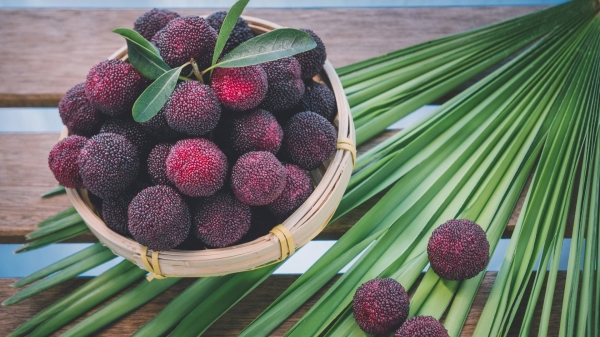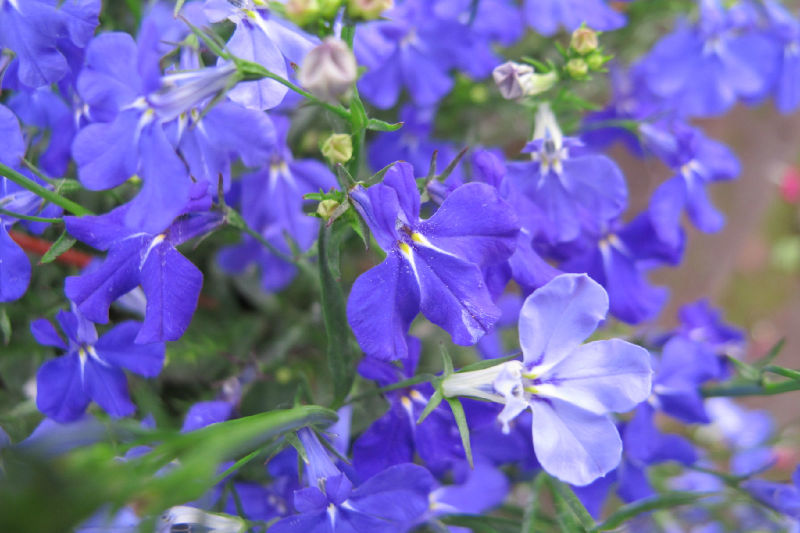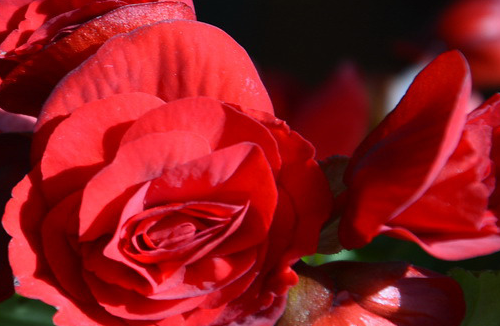Can the white bugs in bayberry eat?
As the saying goes, "the Summer Solstice red bayberry is red all over the mountain, Lesser Heat red bayberry is going to be infested". Because red bayberry is nutritious and without pericarp protection, it has naturally become the main host of some insects.

The white worms drilled out of bayberry are drosophila larvae. The main components of these larvae are proteins, so they will not affect the human body. But although fruit insects are harmless to the human body, it does not mean that all long-worm fruits can be eaten. It is best to wash them before eating them.
Has everyone learned the cleaning method of red bayberry? However, it should also be noted that bayberry, which has been blackened and rotten, must not be eaten, which can easily cause diarrhea. If you want to know more, please follow the four Seasons Plant Network!
What is the white bug after the bayberry is placed?
Red bayberry has the function of relieving thirst and relieving summer heat. In addition, it can also eliminate food, vomiting and diarrhea, dysentery, abdominal pain, cleaning intestines and stomach, relieving alcohol and so on. However, have you found that when the bayberry is soaked in salt water, some white bugs will climb out from the inside of the bayberry? Many people are worried about whether these red bayberry with worms can be eaten and what kind of damage it will cause to health. So someone specially took the bayberry to the testing institution for examination. it turned out that the white bug in the bayberry was the larva of the fruit fly.
Fruit fly larvae appear white, eating it is not only not harmful to health, but also rich in protein. But once the fruit fly larvae mature and turn black, they can't be eaten because they can cause damage to human health. Although it has been confirmed that the larvae inside bayberry can be used, after all, not everyone can stand the test of eating insects.
Can red bayberry be eaten with worms?
Many friends may find that bugs crawl on bayberry after being soaked in salt water, so there is a saying that bayberry has worms. But will the worms in the flesh of red bayberry do harm to people? Let the editor analyze it for you.
Myrica rubra
This kind of worm will not be harmful to the human body when eaten, but is a kind of high quality protein. The white bug in bayberry is actually the larva of fruit fly. Fruit flies usually feed on honey, fruits, etc., and they are relatively clean. In its breeding season, it is attracted by the smell emitted by bayberry and lays eggs on the surface of bayberry. Its eggs hatch into larvae and drill into the pulp, which feeds on it. If it grows naturally, it will not fly away until the larva matures and becomes a fruit fly.
Myrica rubra contains antimicrobial peptides that can improve human resistance.
From birth to growth, fruit fly larvae are almost always in a pollution-free environment, so there are few bacteria that are bad for the human body. Some people also regard this bug as a treasure and think that it can improve people's resistance, so eating bayberry can't make you have a bad stomach.
The presence of bugs in bayberry is a natural phenomenon and a manifestation of biodiversity. Now more and more bayberry producing areas, such as Yuyao and Cixi in Ningbo, Xianju in Taizhou, Ouhai in Wenzhou, Qingtian in Lishui, Lanxi in Jinhua and other major producing areas have begun to adopt pollution-free and high-quality cultivation. Bayberry, which is cultivated by means of physical control, such as insect trap paper, insect repellent film, insect control lamp, insect prevention net and so on, can almost be insect-free. This kind of pollution-free red bayberry is more expensive and more popular, and it is also the direction of red bayberry planting in the future.
The shelf life of fresh bayberry fruit is very short, only 1 Mel 2 days at room temperature. If there are worms in it, it will mature with the deterioration of red bayberry. Drosophila larvae are harmless to the human body during the white larval stage. Once it begins to mature, turn black, and climb out, it is harmful to the human body to eat at this time. Therefore, after buying red bayberry, be sure to eat it as soon as possible.
- Prev

Six times the profit of culture
1. The growth temperature is 15-18 degrees, and then drops to 10-15 degrees. This temperature will make the root system develop well. Liubeili is very sensitive to low temperature. It is best to keep the growth temperature at 15-18 degrees in spring and provide long-day sunshine.
- Next

How to raise Rieger Begonia
Soil Rieger Begonia still has certain requirements for soil. It likes loose soil with good drainage performance. We can configure this soil according to the proportion ourselves. If it is inconvenient, we can go to a special flower shop to buy it. Temperature Rieger Begonia likes warm growing conditions
Related
- Fuxing push coffee new agricultural production and marketing class: lack of small-scale processing plants
- Jujube rice field leisure farm deep ploughing Yilan for five years to create a space for organic food and play
- Nongyu Farm-A trial of organic papaya for brave women with advanced technology
- Four points for attention in the prevention and control of diseases and insect pests of edible fungi
- How to add nutrient solution to Edible Fungi
- Is there any good way to control edible fungus mites?
- Open Inoculation Technology of Edible Fungi
- Is there any clever way to use fertilizer for edible fungus in winter?
- What agents are used to kill the pathogens of edible fungi in the mushroom shed?
- Rapid drying of Edible Fungi

